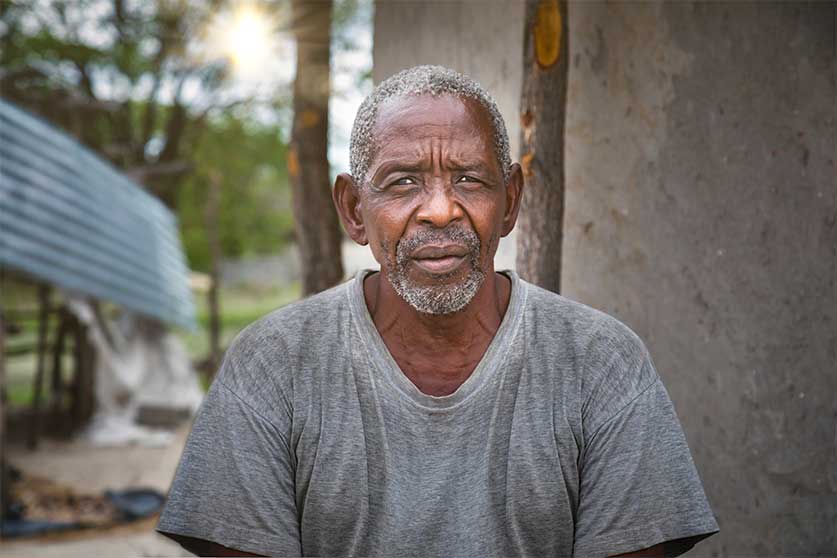The opioid crisis is a public health emergency that has affected people of all demographics. However, according to opioid overdose data, some groups have struggled more than others.
In particular, over the past decade, there has been a surge in opioid overdose deaths among older Black men.
Opioid-Related Deaths
During the opioid epidemic, older Americans have experienced a spike in opioid-involved overdose deaths.
Between 1999 and 2019, the annual rate of opioid-related overdose deaths among adults aged 55 and older increased about tenfold, from 0.9 deaths per 100,000 population to 10.7 deaths per 100,000 population.
Among this age group, Black men have been hit the hardest.
Higher Rates Of Overdose
Since 2013, Black men have faced much higher rates of opioid overdose compared to others in their age group. In 2019, their opioid overdose fatality rate reached 40.3 deaths per 100,000 population, four times higher than the overall rate among older adults.
This surge reflects a larger shift in the main victims of the overdose crisis. At the start of the opioid epidemic, most overdose victims were white. That has slowly changed over the years.
In 2019, the overall rate of overdose deaths among Black Americans surpassed the rate among white Americans for the first time (36.8 deaths compared to 31.6 deaths per 100,000).
Increases In Death Rates
Also, between 2018 and 2019, the opioid overdose death rate among Black American rose by 38% across Massachusetts, New York, Kentucky, and Ohio.
There was no change among other racial and ethnic groups. Another study showed that when the COVID-19 pandemic caused overdose death spikes across 25 states and Washington, D.C., Black people faced the largest spikes.
What Caused This Surge?
The rise in opioid overdose deaths among older Black men and other Black Americans has two main causes: the rise of fentanyl and unequal access to treatment.
The Rise Of Fentanyl
According to the Centers for Disease Control and Prevention (CDC), the opioid overdose crisis has occurred in three waves.
The first wave started in the 1990s. It mainly involved prescription opioid pain medications like oxycodone (OxyContin). The second wave started in 2010, as overdoses involving the illegal opioid heroin surged.
The current third wave began in 2013. It’s characterized by a sharp increase in drug overdose deaths involving synthetic opioids, especially fentanyl. According to the CDC, fentanyl is up to 50 times stronger than heroin and 100 times stronger than morphine.
Although it’s extremely potent, fentanyl is relatively cheap to manufacture. That’s why drug dealers secretly add it to various illicit drugs, such as:
- heroin
- stimulant drugs, including cocaine and methamphetamine
- counterfeit prescription drugs, including opioids like OxyContin and benzodiazepines like Xanax
Due to these fentanyl-laced drugs, older Black men who live with drug addiction and regularly use street drugs face a much higher risk of fatal overdose than they used to.
Unequal Access To Treatment
The rise of fentanyl-laced drugs has impacted people of all races. However, it has been especially deadly for the Black community due to racial disparities in overdose and addiction treatment.
For example, studies show that compared to white Americans, Black Americans have less access to naloxone. Naloxone (brand name Narcan) is a medication that can quickly reverse the effects of an opioid overdose. Without it, people who overdose face a significantly higher risk of death.
In addition, Black Americans have more difficulty getting treatment for opioid use disorder (also called opioid addiction).
According to a study of people treated at an emergency department for non-fatal overdoses, Black people are half as likely as non-Hispanic white people to get referred to or access addiction treatment. Those who do access treatment are less likely than white patients to complete it.
Why Do Black People Have Less Access To Addiction Treatment?
There are a number of reasons why Black people struggle to access and complete addiction treatment. First, addiction treatment is expensive, and Black Americans are less likely to have health insurance that could help them pay for it.
Lack Of Ethnic Diversity In Rehab Staff
Many substance abuse treatment programs lack racial and ethnic diversity among staff. As a result, Black patients may feel misunderstood or discriminated against by addiction medicine specialists, which makes them more likely to stop treatment.
Fears Of Criminal Justice System
Some Black Americans may hesitate to admit their drug abuse and seek treatment due to fears of getting targeted by the criminal justice system.
Indeed, studies show that although Black and white people have similar rates of drug use, law enforcement officials are much more likely to arrest Black people for drug-related crimes.
Less Likely To Receive MAT
Finally, even when Black people access addiction treatment, they are less likely to receive medication-assisted treatment (MAT).
In MAT, prescribing physicians use medications like buprenorphine and methadone to decrease opioid cravings and withdrawal symptoms. Without this form of treatment, patients face a much higher risk of relapse and overdose.
If you or someone you love struggles with opioid addiction or another substance use disorder, please contact Northeast Addictions Treatment Center.
Our compassionate healthcare providers offer mental health counseling, medication-assisted treatment, and other evidence-based interventions to help you or your loved one stay sober.
Keep Reading:
- The Opioid Pandemic
- Opioids Listed From Strongest To Weakest
- How Covid-19 Could Cause The Next Wave Of The Opioid Crisis
- Deadly Rise Of Mexican Fentanyl In The United States
Sources:
Centers for Disease Control and Prevention — Overdose death rates increased significantly for Black, American Indian/Alaska Native people in 2020
Centers for Disease Control and Prevention — Opioid Data Analysis and Resources
JAMA Network — Black patients less likely to get treatment for opioid-use disorder
JAMA Network — Disparities by Sex and Race and Ethnicity in Death Rates Due to Opioid Overdose Among Adults 55 Years or Older, 1999 to 2019
JAMA Network — Incidence of Treatment for Opioid Use Disorder Following Nonfatal Overdose in Commercially Insured Patients
Journal of Urban Health — Racial Disparities in Overdose Prevention among People Who Inject Drugs
Yale School of Medicine — Racial Inequities in Treatments of Addictive Disorders


